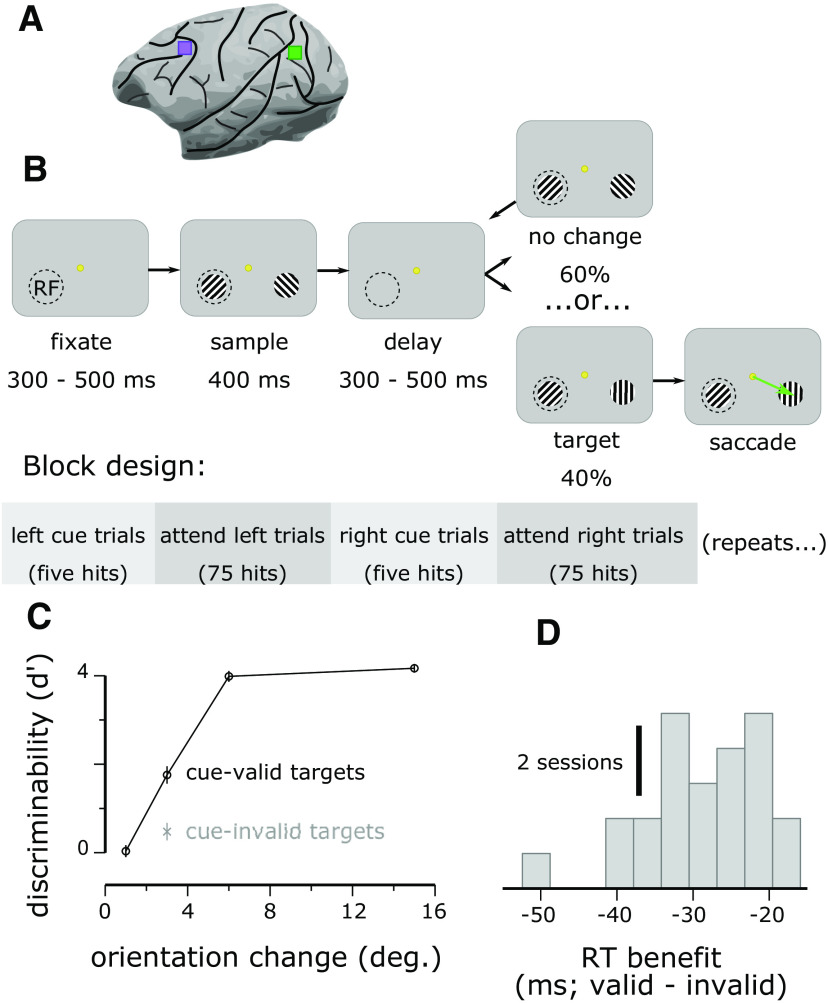Figure 1.
Dual V4 and PFC recordings during a spatial attention task. A, Approximate location of Utah array implantations in V4 (green) and PFC (purple). B, Animals fixated a central dot while stimuli were repeatedly flashed bilaterally. Reinforcement was given if the animal made a saccade to a stimulus that changed orientation from the previous presentation (the target). In a blocked fashion, the target was more likely to occur in one hemifield (the valid location). Cue trials, in which only one stimulus appeared at the high-probability location, signaled the start of each block. C, Animals were more accurate at detecting Δ3° targets at the valid location than at the invalid location, confirming that they selectively attended to the valid location (Monkey P: cue-valid, mean ± SEM; cue-invalid, ; Monkey W: cue-valid , cue-invalid ). Results for Monkey P are shown; results for Monkey W were similar (compare Snyder et al., 2018). D, Animals were also faster at detecting targets at the valid location than at the invalid location (Monkey P: RT benefit for cue-valid compared with cue-invalid targets, ΔRT = – 29.2 ± 1.6 ms, Monkey W: ΔRT = – 42.3 ± 4.8 ms, ). Results for Monkey P are shown; results for Monkey W were similar.

